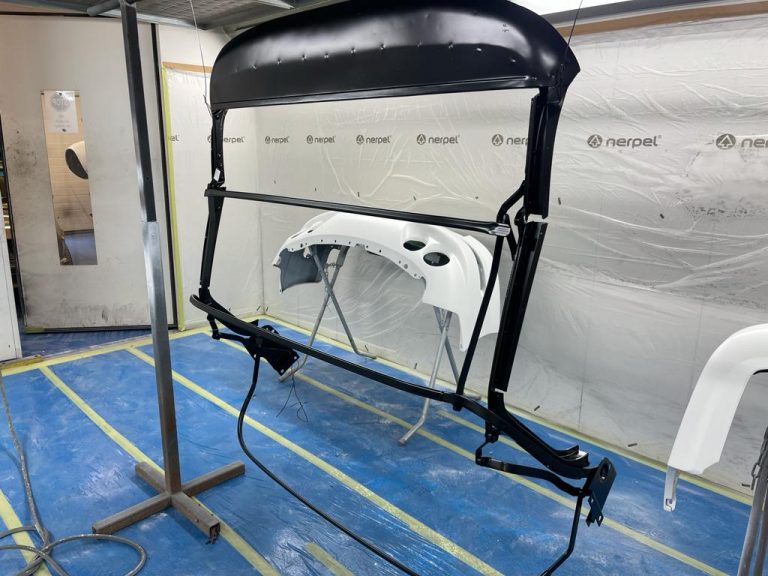
Hood painting for the E-Type.
Just a quick update here to show photos of the 1973 Jaguar E-type Roadster Series 3’s hood frame that’s recently been painted by Chris in


Just a quick update here to show photos of the 1973 Jaguar E-type Roadster Series 3’s hood frame that’s recently been painted by Chris in
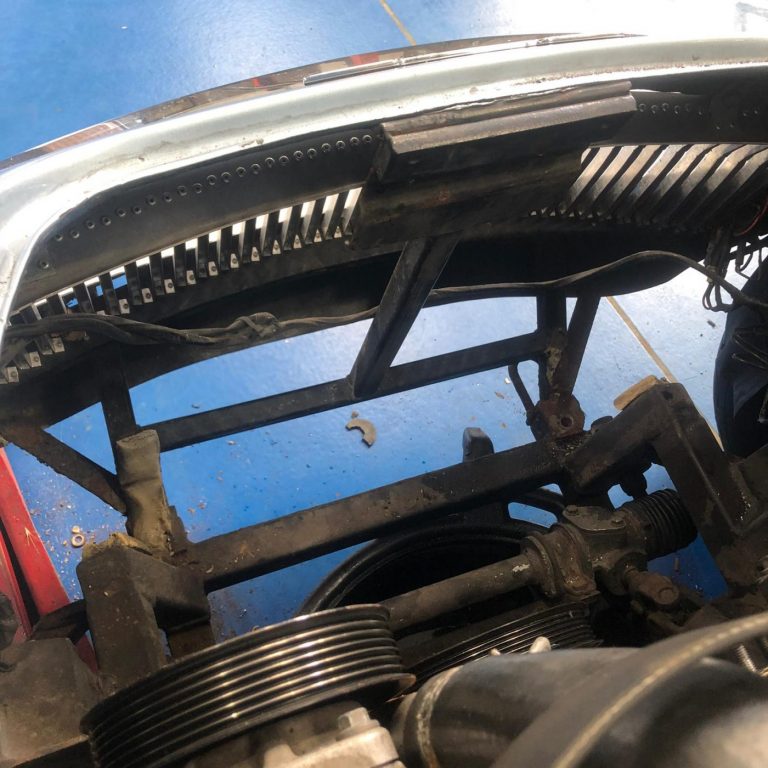
The radiator has been removed and sent away to Sheldrake and Wells for further investigations. Sheldrake & Wells Ltd. based in Ipswich, are now the only radiator

John has been giving the heater valve some attention on the peony red 1960 Jensen 541S. When it was being tested, the heater was blowing

James has been doing the last bits of welding repair work on the 1998 Honda Integra Type R. He removed the left hand quarter panel
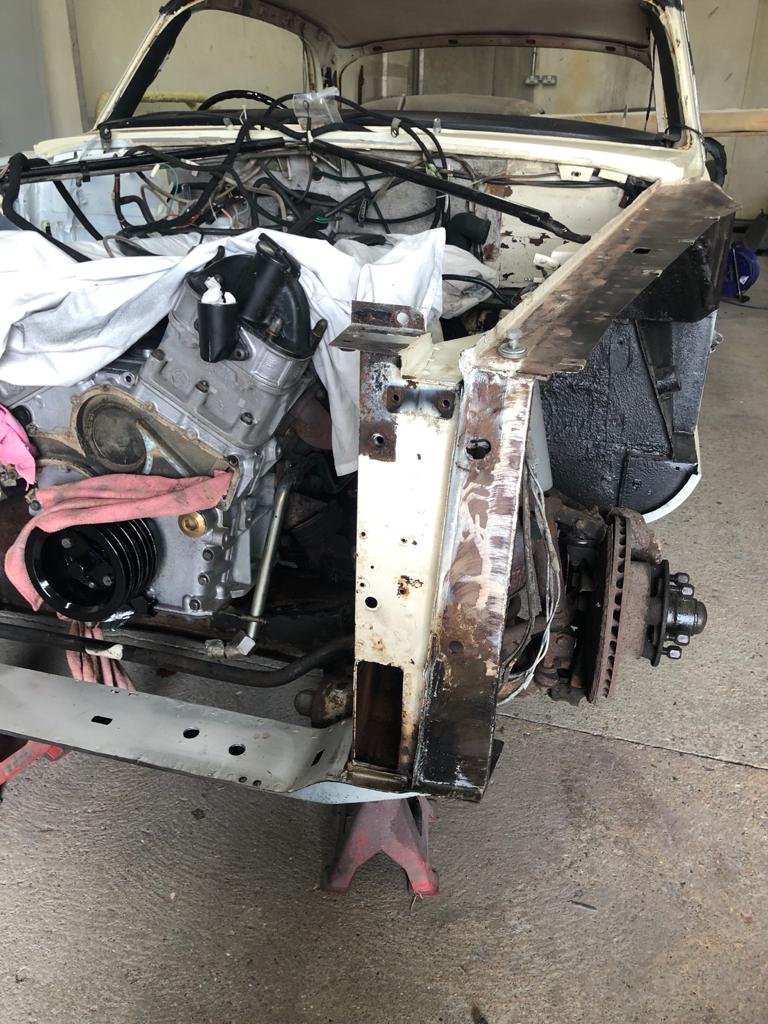
James has got the 1986 Daimler Double Six in the fabrication bay and has been starting the welding work on it! He’s been concentrating on
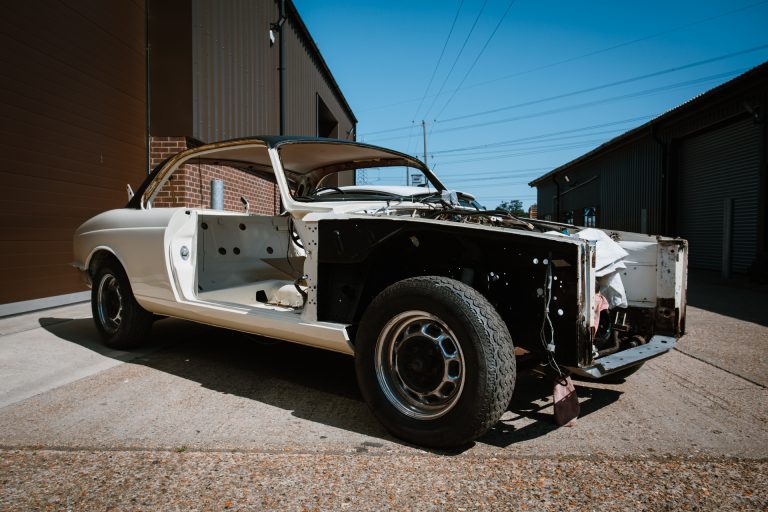
Here we have a new arrival to the workshop, a 1977 Daimler Double-Six. It’s only in for a small amount of work, which is that
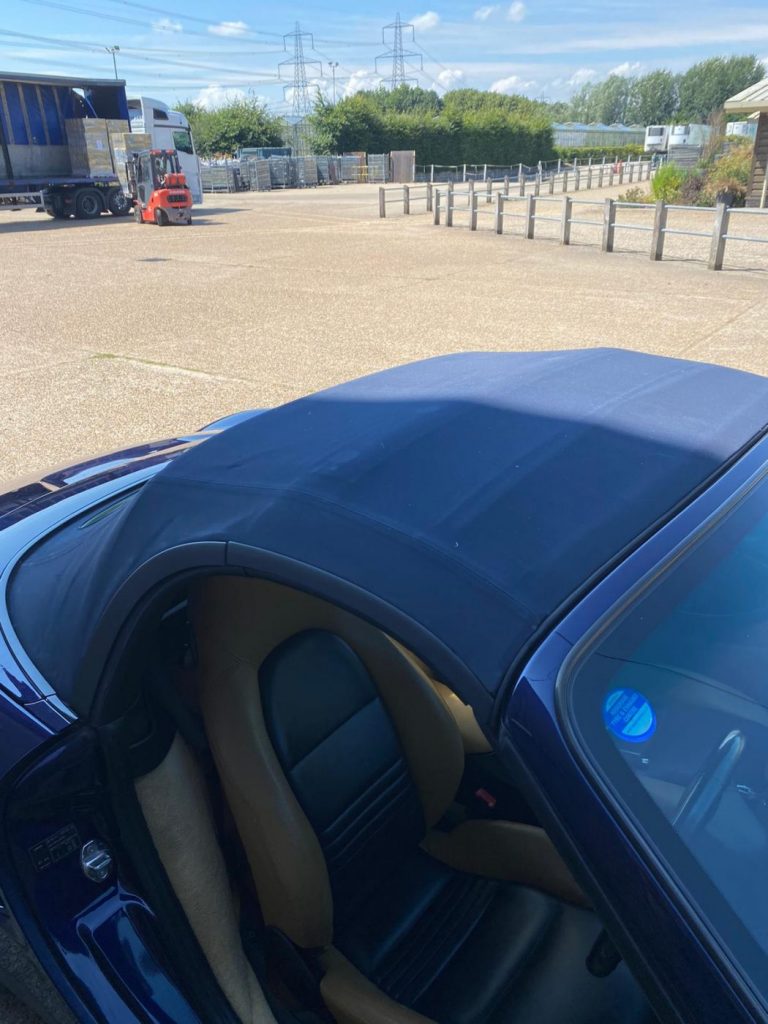
Having recently attended our Classic Car Show the owner of this Porsche Boxter has asked for our help and assistance on some remedial works required
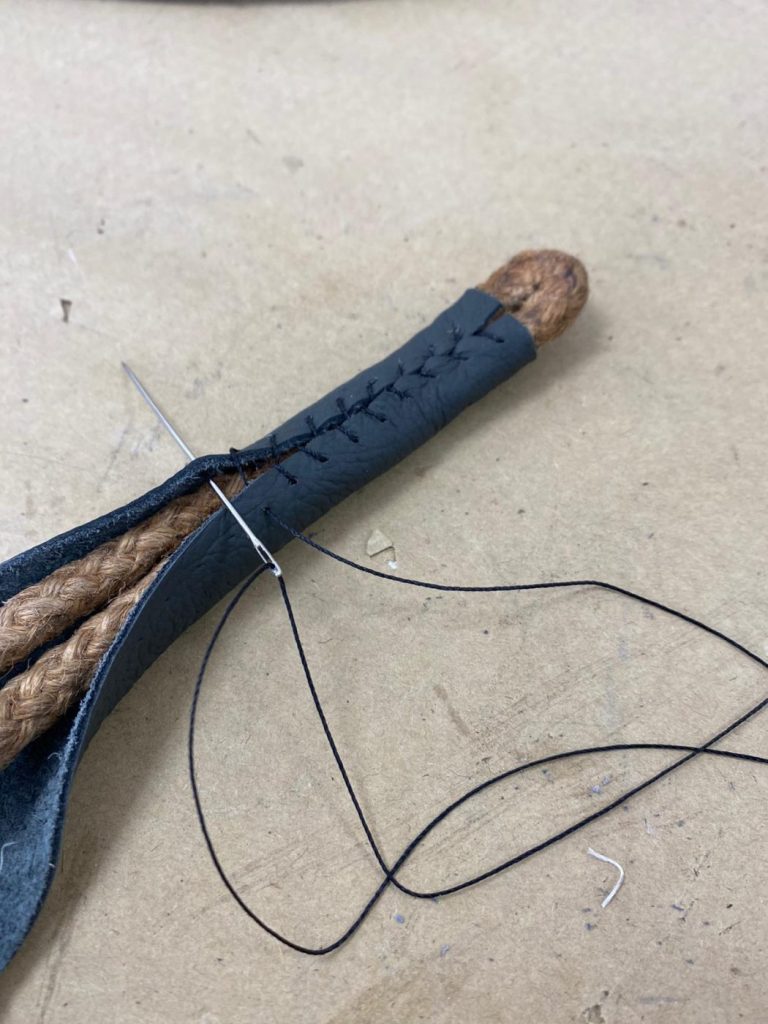
Another little update on the 1955 Aston Martin DB 2/4 coming your way! In the trim shop, Kath has been re-covering the door straps. She

Kath has been doing more seat work for the 1955 Aston Martin DB 2/4. This time around she’s been fitting the front base seat covers
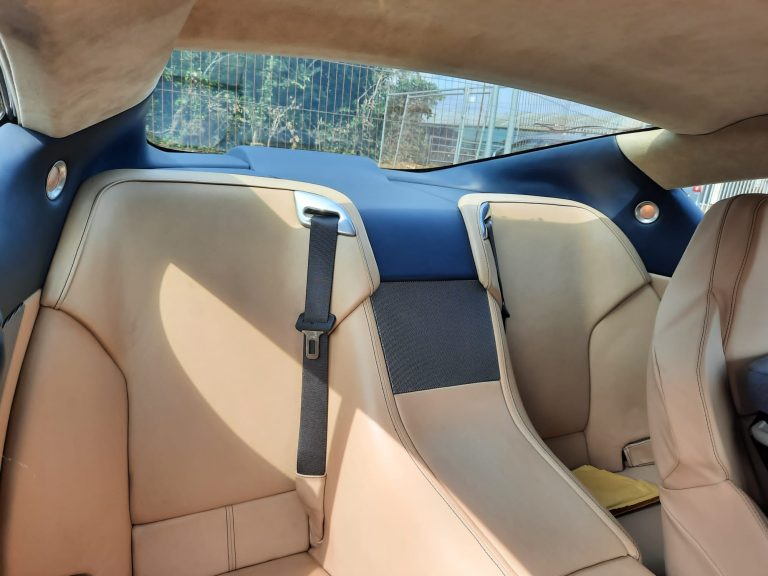
Mauro has been doing a little work on our 2005 Aston Martin DB 9. The panel that went from the rear seats to the parcel

Launching today is this 1988 blue Ford Escort 1600 Cabriolet! The Ford Escort was originally produced as a small family car, manufactured from 1968 to
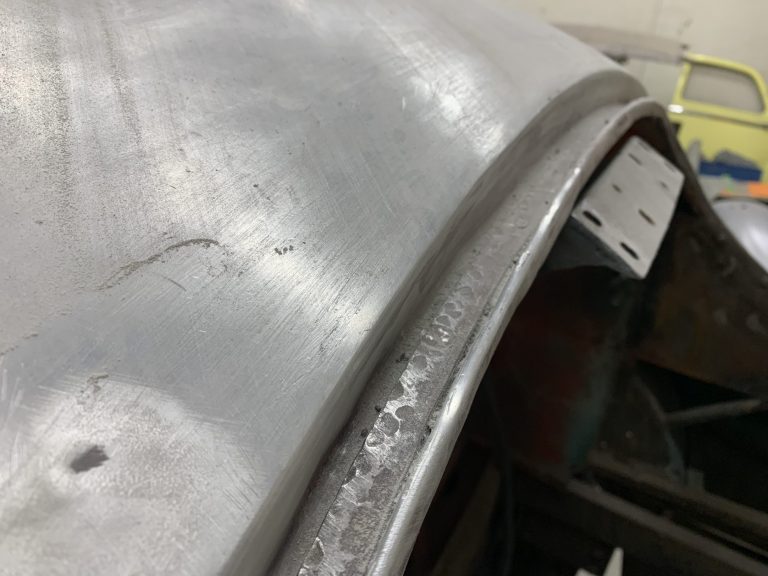
Up to now, our 1955 Aston Martin DB2/4 was not uncovering too many hidden issues. Naturally, we had a lot of repairs and re-shaping to
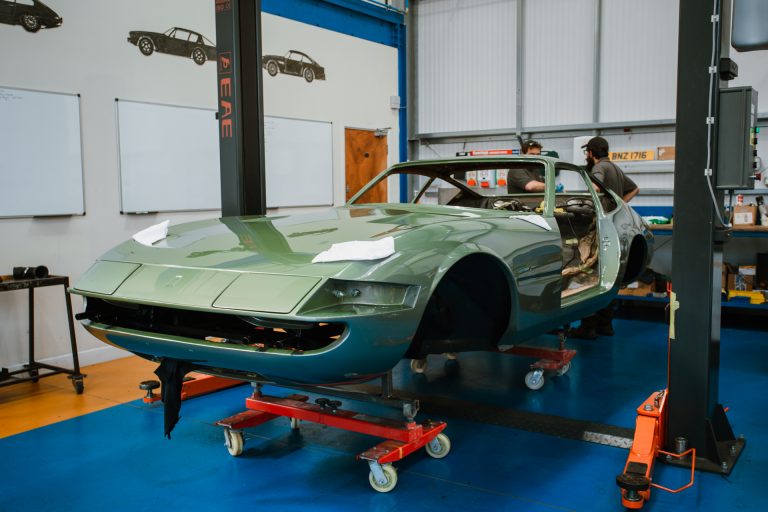
This week we’ve welcomed the 1979 Arrow Ferrari Daytona back into the workshop after it’s been in storage for a little bit of time. The

You can read about the full story of this car here! At the start of November 2019, this 1968 Triumph TR5 came into our workshop
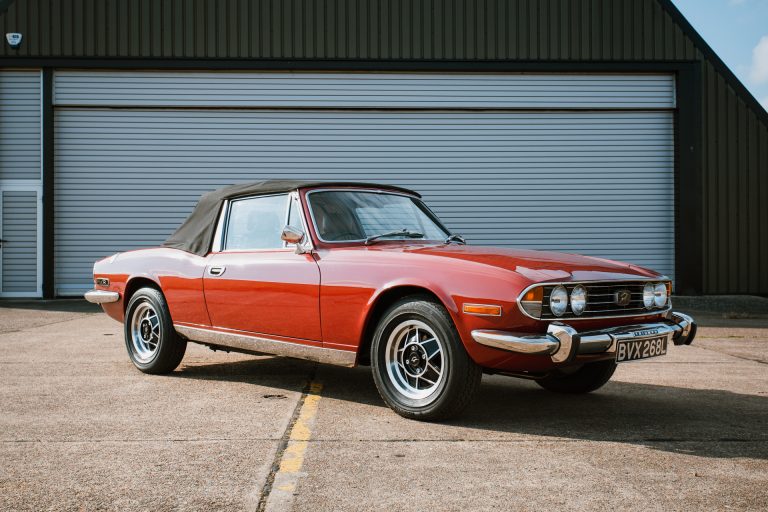
The 1973 Triumph Stag has now come to its completion stage! It’s had quite the journey! You can read in full detail about all the
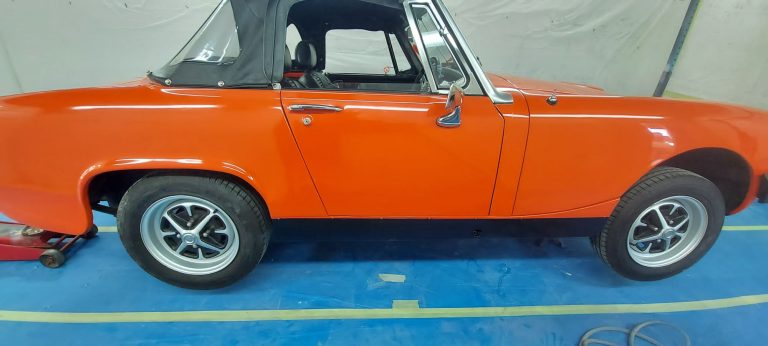
After Scott’s repair work on the offside sill of the blaze orange 1979 MG Midget, the car has since been taken into the paint shop
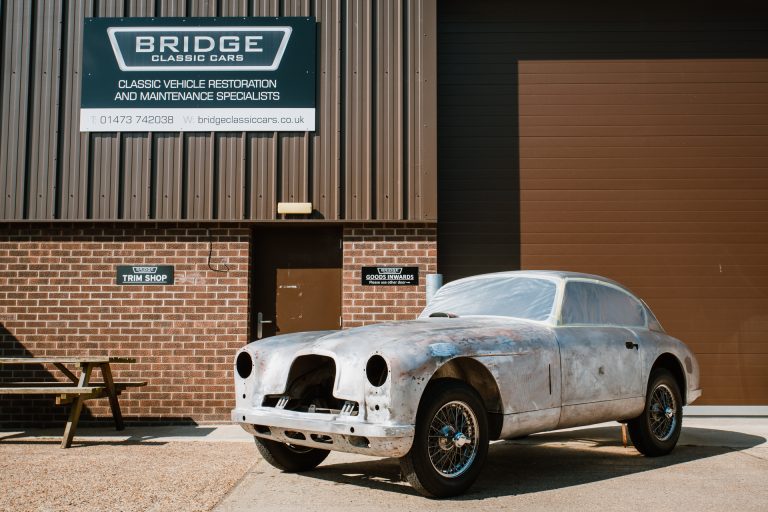
We check in to our DB2/4 restoration as Clinton is finalising the bonnet fabrication. Clinton has fabricated brand new hinges and completely reshaped the lower
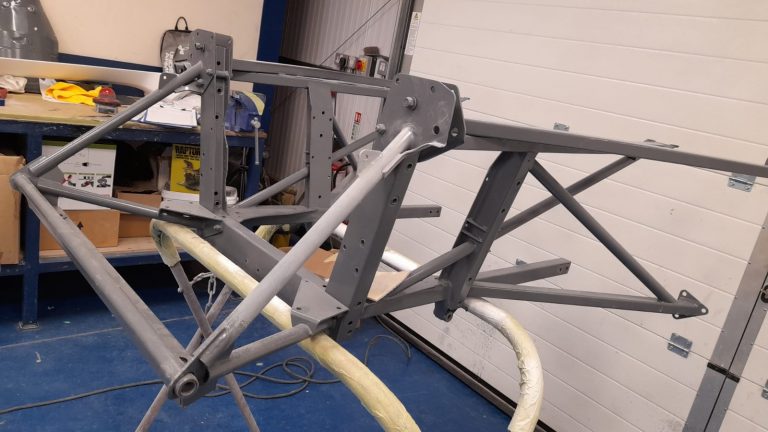
Lydia has been sanding down the primer on the front frame for the 1973 Jaguar E-Type Series 3. This was simply done with 500-grade soft

This Friday, the 6th of August, is the draw for our competition to win a gold 1981 Rover 3500 SD1 Vanden Plas! For your chance

Today we delivered this maroon 1959 Jaguar Mk I to its rightful winner! The draw for this car was held last Sunday at the annual

Brian has been continuing the interior trim work for the 1955 Aston Martin DB 2/4. This time, he’s been working on a pair of dash
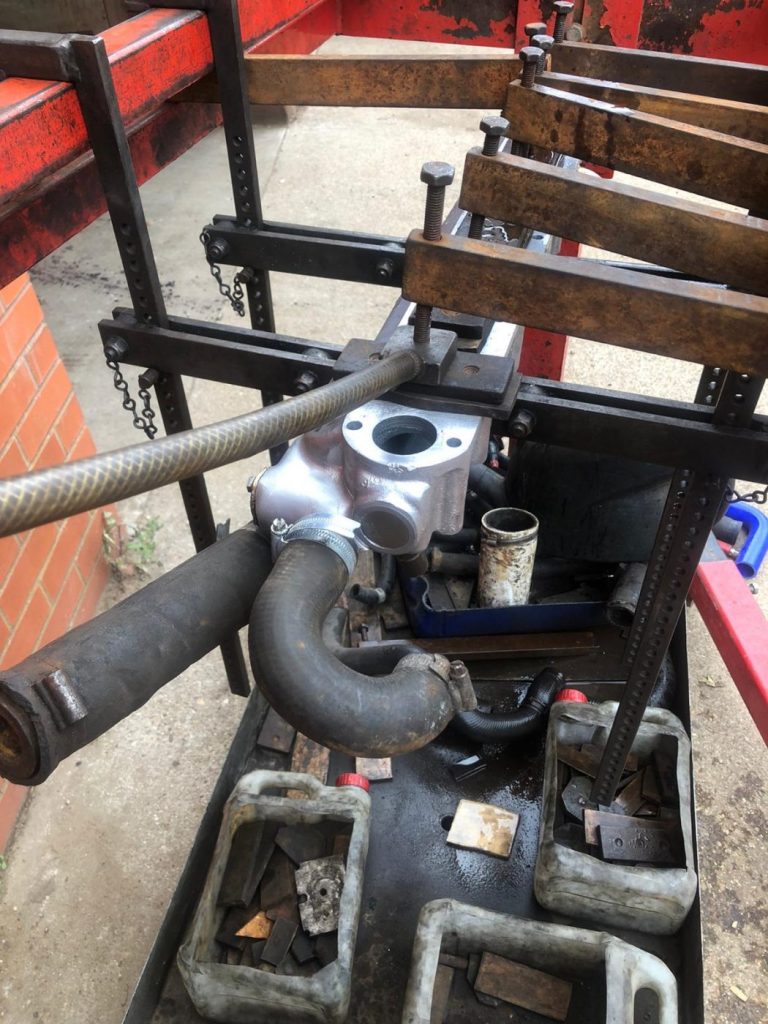
Ady has taken a trip up the road to Coltec Racing to pressure test the Jaguar Mk VII engine. During pressure testing all-bar-one of the

The 1973 Jaguar E-Type Roadster Series 3 has had another layer of primer sprayed on. This comes after sanding and repair work was done to

Chris and Lydia have been continuing their work on the 1998 Honda Integra Type R in the paint shop. As before, Chris has been spraying
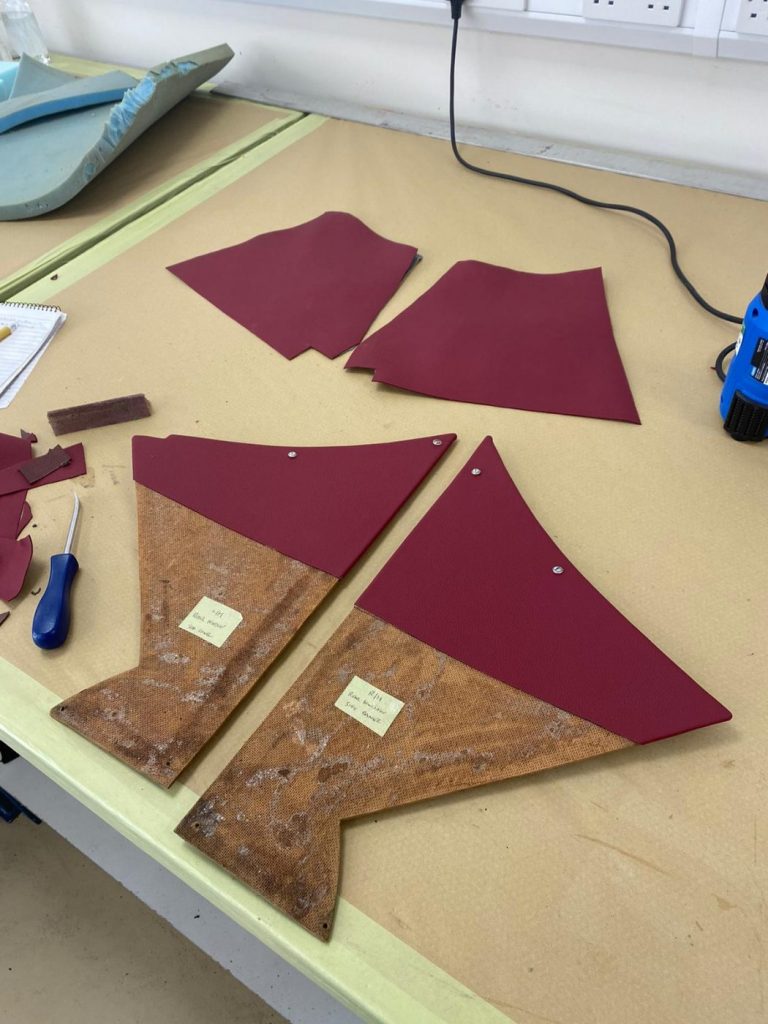
Brian has been re-covering more panels for the 1955 Aston Martin DB 2/4. This time it’s been the lower A posts, the dash side panels,
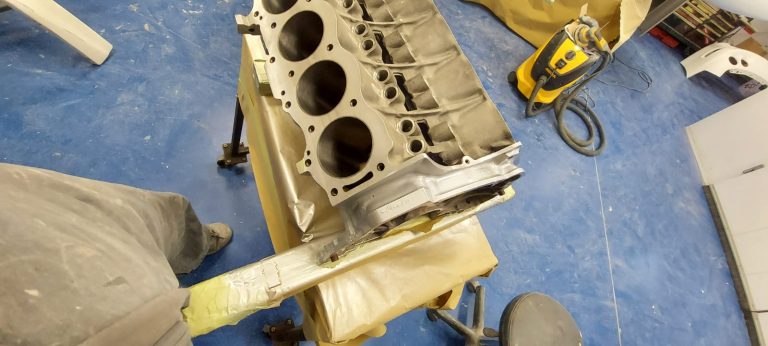
Chris has been re-painting the engine for the 1973 purple MG B GT V8. He painted the engine in sections, masking up along the way
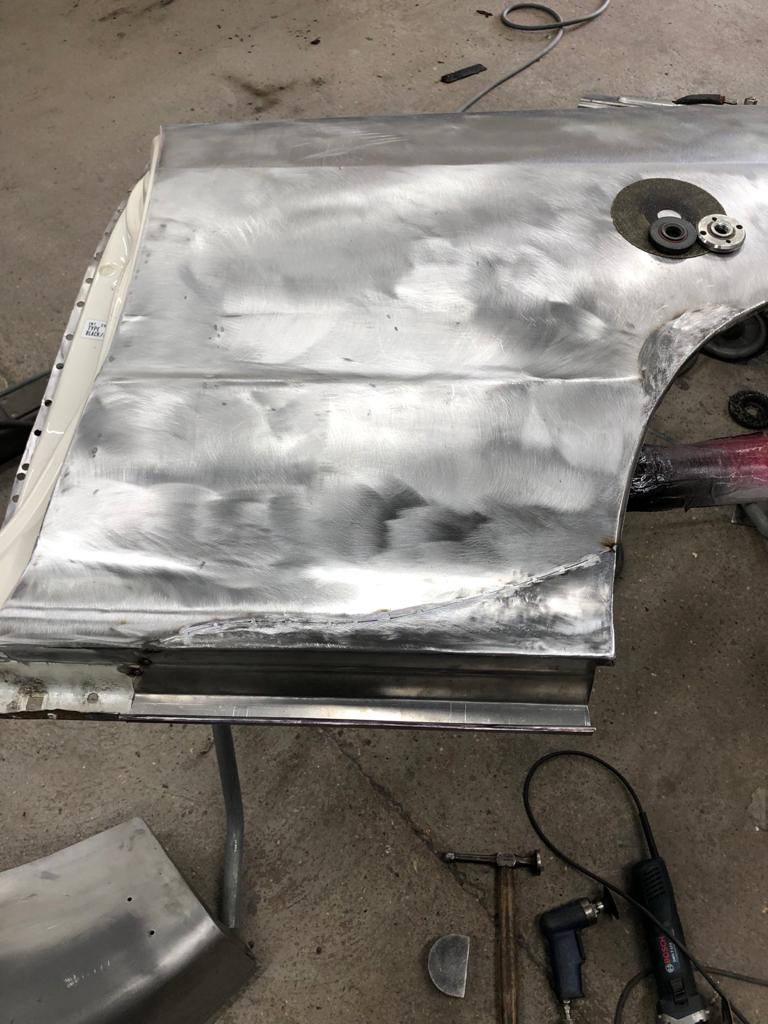
James has been working on the 1998 Honda Integra Type R. He’s repaired a section on the lower quarter panel by fabricating and welding. It’s
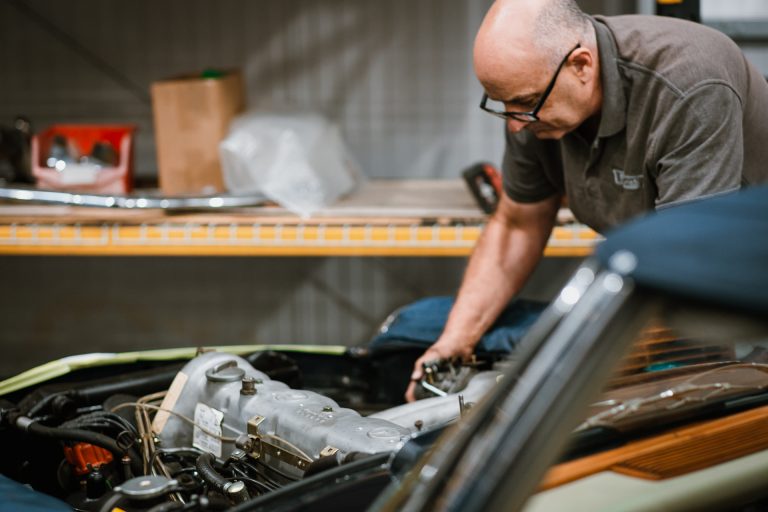
Paul has successfully removed the engine from our beautiful blue 1969 Mercedes 280SL Pagoda. The engine will be rebuilt by Ady and the engine bay
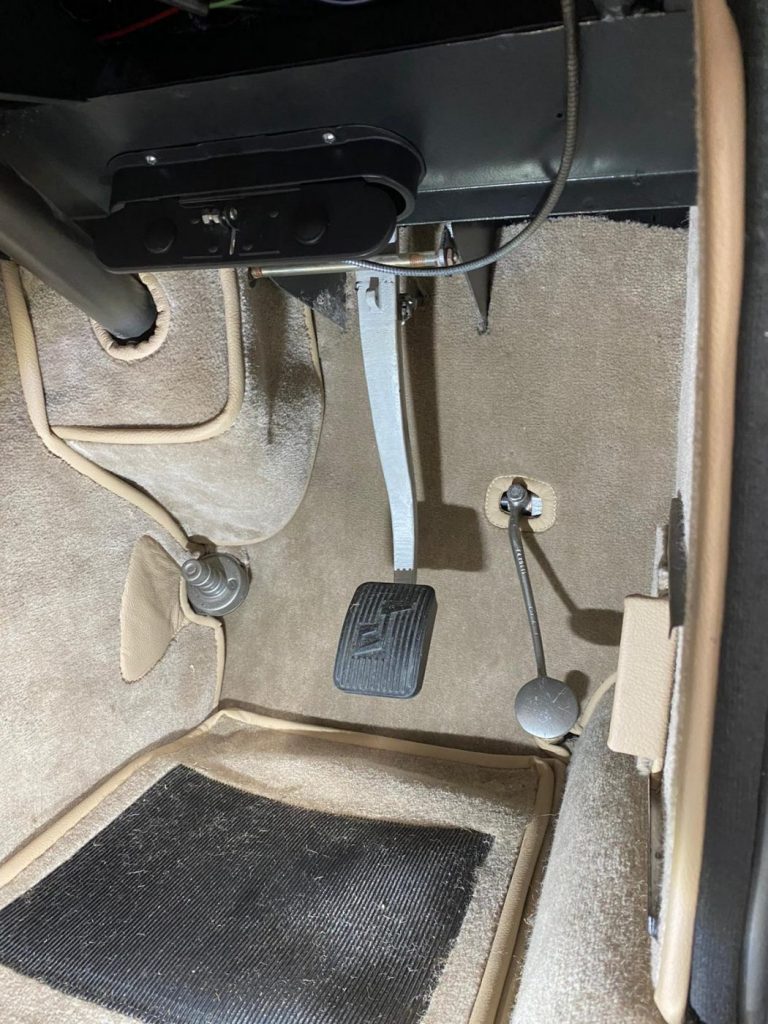
Kath has been laying the carpet back down in the peony red 1960 Jensen 541S. The pedals needed some adjustment, so the sound deadening and
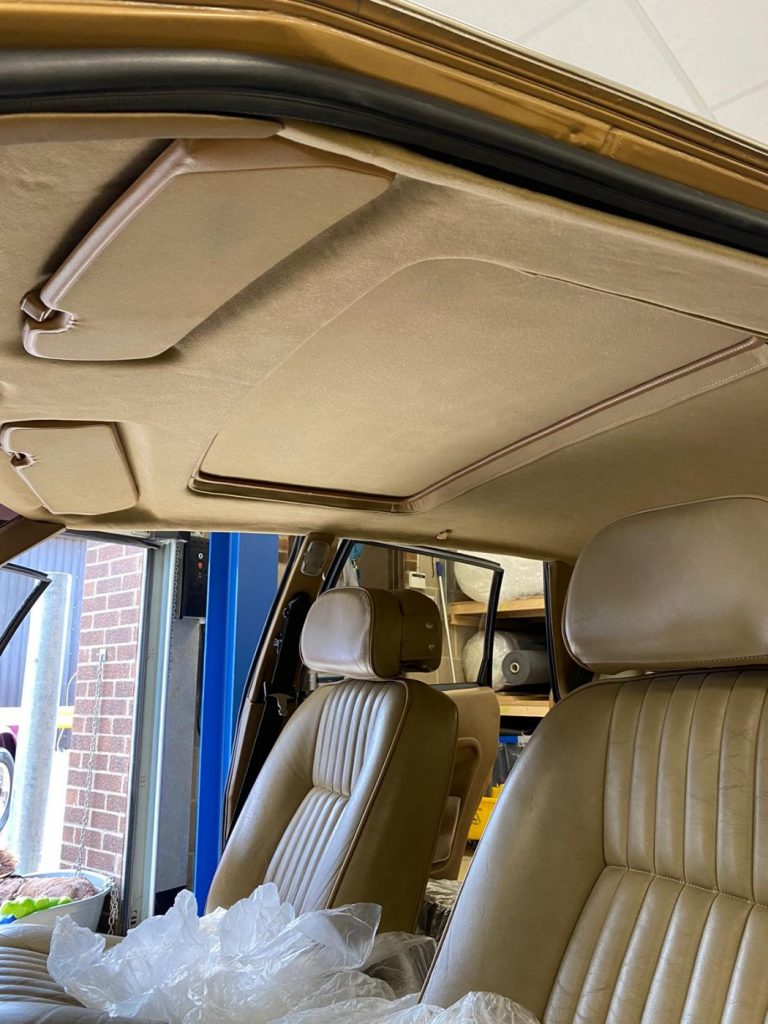
Brian has been finishing the headlining fitting for the 1981 Rover SD1 Vanden Plas. In this last post about it, you can see that he
Just a quick update here to show photos of the 1973 Jaguar E-type Roadster Series 3’s hood frame that’s recently been painted by Chris in the paint shop.
The radiator has been removed and sent away to Sheldrake and Wells for further investigations.
Sheldrake & Wells Ltd. based in Ipswich, are now the only radiator specialist in Suffolk that undertake the repair and reconditioning of car, commercial and industrial radiators.
The company was formed back in 1975 and is now under the second generation of family management. Originally formed to provide repair and reconditioning of automotive and commercial radiators but over the years have increased the products to include number plate production and other related services including the supply of air conditioning parts and with over 500 units in stock.
We have worked alongside Sheldrake & Wells for many years and love the work they do!
Ady has also removed the water pump to replace with a new unit.
John has been giving the heater valve some attention on the peony red 1960 Jensen 541S. When it was being tested, the heater was blowing hot when it was actually being set to cold on the control. So John set about changing the valve for it to work properly.
James has been doing the last bits of welding repair work on the 1998 Honda Integra Type R. He removed the left hand quarter panel and repaired around the wheel arch. Then he finished the spot welding around the rear wheel arch.
James has got the 1986 Daimler Double Six in the fabrication bay and has been starting the welding work on it!
He’s been concentrating on the inner wing and bonnet hinge housing area today. He found there were spot welds that had been previously been put in and weren’t holding anything in place, so he’s given that some attention and welding parts in properly. He’s also taken out the corroded areas so he can fabricate replacement sections.
Here we have a new arrival to the workshop, a 1977 Daimler Double-Six. It’s only in for a small amount of work, which is that both front inner wings need to be repaired and painted and there’s a sheered bolt that needs removing from its trailing arm. Stay tuned for the progress!
Having recently attended our Classic Car Show the owner of this Porsche Boxter has asked for our help and assistance on some remedial works required on his electric hood.
The clear perspex rear screen is coming away from the hood itself so needs re-attaching. Brian has had a closer look and in order for this to be repaired properly the roof will have to come off the car. Brian feels that re-attaching the existing screen to the hood may only be a temporary fix as the existing holes may be duplicated and therefore the new stitching may not be as tight and secure second time around.
With the entire hood being removed is there an argument to say ‘just replace the hood with one off the shelf?’ The most cost effective solution would be to do this. A bespoke hood manufactured would not be required as there are companies out there that have already produced the hood from a pattern so rather than reinventing the wheel go with a company that has been there and done that!
At the end of the day, the hardest bit is removing and fitting the hood so to fit a brand new one that is beautifully tight would give you the best results.
Another little update on the 1955 Aston Martin DB 2/4 coming your way!
In the trim shop, Kath has been re-covering the door straps. She began the process by taking the original leather off one of them and using it as a pattern for both of them on the new leather. Once cut out, she sewed the new leather piece onto each one, by hand. The way that it was sewn couldn’t have been done by machine.
Kath has been doing more seat work for the 1955 Aston Martin DB 2/4. This time around she’s been fitting the front base seat covers onto their foams and frames. She’s already sewn up the new front bases, which you can read about here.
The process started with Kath adding sections of new foam to the original, where it had deteriorated, and blending it in. She then cleaned off old glue from the wood around the straps and re-painted it. She also tightened up the straps after becoming loose from age. Kath took the original strip of wood from the gap in the foam, cleaned it up and attached it to the end of the calico piece that was sewn into the new front base seat. This piece of wood gets attached to the underneath of the foam and straps frame and helps keep the middle piped section down into place. Kath glued a piece of black calico to the wooden frame, to give a neat finish behind the straps. The front base seat could then finally be stapled onto the wooden frame. After that was done, the metal seat sliders were fixed onto the underneath of the seat and the matching front squab was attached to it on top.
Kath is now in the process of fitting up the other front base, so stay tuned!
Mauro has been doing a little work on our 2005 Aston Martin DB 9. The panel that went from the rear seats to the parcel shelf in the middle was rattling so he took it all apart and adjusted the metal bracket that holds it in place.
Launching today is this 1988 blue Ford Escort 1600 Cabriolet!
The Ford Escort was originally produced as a small family car, manufactured from 1968 to 2003. There were six different model variations throughout its time and this is the fourth one. It’s instantly recognisable as an updated version of the previous model, taking styling cues from the then recently introduced Scorpio/Granada III.
We don’t have much history on the car itself, but we know that it’s been restored relatively recently, the paintwork is in fantastic condition, along with the interior and it’s been well looked after throughout its life.
Up to now, our 1955 Aston Martin DB2/4 was not uncovering too many hidden issues. Naturally, we had a lot of repairs and re-shaping to do but nothing too scary.
Having carried out a full bare metal strip down of the car Clinton has uncovered some very questionable repairs that have been done at some stage in its life. The entire rear opening is completely out of shape due to previous damage. Most of the opening is being held in by reinforced steel attached to the aluminium body to strengthen and hold the shape.
This is absolutely not correct and must be addressed. Not a small job to carry out but one that is essential if we are to complete this project to the exacting standards that it should be. Clinton will need to cut out sections at a time, remove the steel work and re-shape the aluminium back to what it should.
The video shows the entire area and how extra metalwork is fitted to help strengthen the aperture.
This week we’ve welcomed the 1979 Arrow Ferrari Daytona back into the workshop after it’s been in storage for a little bit of time. The last time it was in here was back in March when the body had just been painted and the seats had finished being re-upholstered. You can read about its progress so far here. Stay tuned for updates!
You can read about the full story of this car here!
At the start of November 2019, this 1968 Triumph TR5 came into our workshop as a part restoration. In January 2020, the components were stripped to assess which parts could be refurbished and which parts needed to be replaced. In February 2020, the interior work began and the chassis was built up. In March 2020 the seats were finished, the body shell was repaired and we welcomed in a delivery of parts. In April 2020 more body shell repair work was carried out. In October 2020 the body was mounted onto the chassis and electronics were carried out. In November 2020 heat resistant paint was applied to areas. In January 2021 engine bay work was carried out, work on corrosion was carried out, colour matching to the paintwork was done and windows were fitted. And from then to June this year, the finishing touches were put into place.
Fast forward to today, where the car is now complete and ready to go!
The 1973 Triumph Stag has now come to its completion stage! It’s had quite the journey! You can read in full detail about all the work that was done to it here.
In March this year, the journey began with the interior restoration. The seats were all stripped apart and the frames were given a spruce up. In April, the hood frame was given a clean, inspection and repaired. Also in April, the kits arrived for the new interior and Kath and Brian began the process of fitting it all. In May more of the new interior was put in, including the door cards, carpet and tonneau cover. Also in May paintwork was done, oil leaks were inspected, carburettor work was carried out and the steering rack was overhauled. In June a new ball point was installed, we waited for wipers and a bumper to turn up and the heater and gearbox were given some attention!
So after all that work, it’s now good to go!
After Scott’s repair work on the offside sill of the blaze orange 1979 MG Midget, the car has since been taken into the paint shop where it had the sills re-painted and the underneath was sealed.
This car was a competition car, back on the 26th of July, and we’ll be delivering it to its rightful winner tomorrow!
We check in to our DB2/4 restoration as Clinton is finalising the bonnet fabrication. Clinton has fabricated brand new hinges and completely reshaped the lower bumper moulding, letting in fresh metal when neccaasary. ‘The car can warp over time, so what may be a very small warpage has a knock-on effect and can result in panels sitting out of alignment across the entire car’ Clinton explains. The only way to ensure we achieve the best possible restoration is by going to the extent Clinton has with the fabrication and preparation of the bodywork.
The next step will be to make sure all of the panels are correctly aligned, ensuring the gaps are all uniform and tidy.
Lydia has been sanding down the primer on the front frame for the 1973 Jaguar E-Type Series 3. This was simply done with 500-grade soft sanding pads all over. This is all prep for the final coat of paint!
This Friday, the 6th of August, is the draw for our competition to win a gold 1981 Rover 3500 SD1 Vanden Plas! For your chance to enter, simply click here! Where you’ll also be able to find out more information about the car.
Today we delivered this maroon 1959 Jaguar Mk I to its rightful winner! The draw for this car was held last Sunday at the annual Helmingham Hall Festival of Classic and Sports Cars. This has a bit of story that goes with it! The winner was actually at the event but we couldn’t track him down! In the end, we put a post out on Facebook quoting the winner’s name asking for help from the public to contact him, and it got over 30,000 views! Hours later, we got hold of him and he’s now received his prize.
Brian has been continuing the interior trim work for the 1955 Aston Martin DB 2/4.
This time, he’s been working on a pair of dash trays and a pair of under dash panels. For the dash trays, Brian started the process by taking off the rubber lip that went around the hole, then took off the original fabric pieces. He cleaned off as much original glue from the metal frame of the under dash panels. He then lay out the new headlining fabric chosen for the car, and placed the original fabric pieces on top of it, using them as patterns. Once marked out around, Brian cut out the new fabric and the first piece to glue onto the metal was the centrepiece. Glue was applied to the back of the fabric and to the metal and then Brian slowly attached the fabric to it, after the glue had gone tacky, making neat cuts around the hole so the material sat nicely. The inside sides were also covered in headlining fabric. Brian then cut out grey leather for the outside of the under dash panels. These pieces were glued on, then the finishing touch was to place the rubber lip back on.
For the under dash panels, Brian simply took the original headlining fabric off them, sanded down the excess old glue, used the original fabric pieces as patterns on the new headlining fabric, cut out, and glued the new material onto them.
Ady has taken a trip up the road to Coltec Racing to pressure test the Jaguar Mk VII engine.
During pressure testing all-bar-one of the outlets are blanked off and then compressed air is fed into the open port on the inlet manifold, this way we can find if the cylinder head is leaking.
It is always worth getting a pressure test because if anything is cracked internally, it will not be visible, however by using our methods we can easily check if any cracks within your components, before repairing and putting your vehicle back to its best condition.
The 1973 Jaguar E-Type Roadster Series 3 has had another layer of primer sprayed on. This comes after sanding and repair work was done to the car last week. The body of the car and the doors were primed on this occasion.
Chris and Lydia have been continuing their work on the 1998 Honda Integra Type R in the paint shop.
As before, Chris has been spraying primer onto various panels from the car, including the front and rear bumpers, the sills, the registration plate panel, the spoiler and the wings.
Lydia has then been sanding down this primer, using either a block sander, DA sander or by hand. She covered each panel in black guide coat beforehand to help see how much sanding needed to be done. You can read about last week’s work on them here. https://bridgeclassiccars.co.uk/more-stages-of-the-prep-work-for-the-honda-integra/
Brian has been re-covering more panels for the 1955 Aston Martin DB 2/4.
This time it’s been the lower A posts, the dash side panels, the rear seat front rail and the boot side panels. He took the original leather off all of them and cleaned off any old glue that was left behind. He then used the original leather pieces as patterns on the new leather, marked out around them and cut them out. The new leather pieces were then glued onto their associated panels, and any foam was added where need be.
Chris has been re-painting the engine for the 1973 purple MG B GT V8.
He painted the engine in sections, masking up along the way with tape.
James has been working on the 1998 Honda Integra Type R.
He’s repaired a section on the lower quarter panel by fabricating and welding. It’s now ready to be re-fitted back onto the car.
Paul has successfully removed the engine from our beautiful blue 1969 Mercedes 280SL Pagoda. The engine will be rebuilt by Ady and the engine bay will be detailed as part of the project.
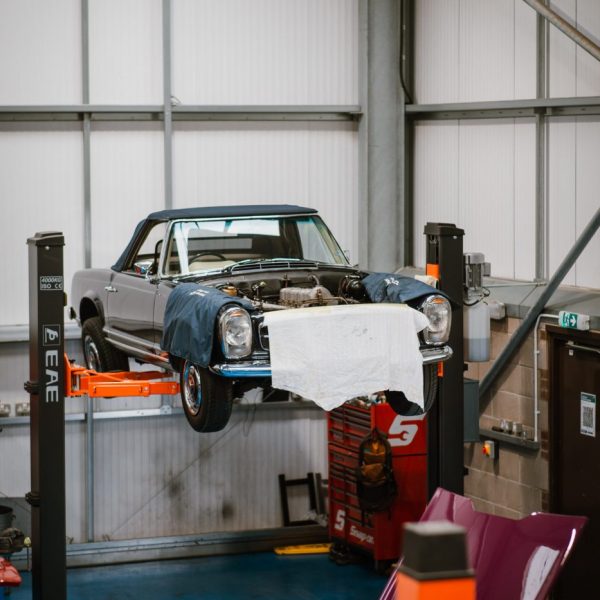
Apart from a couple of small paint imperfections the engine bay is very good order so a really good clean followed by some touching up in places will present us with a lovely space to return the engine to once completed.
Kath has been laying the carpet back down in the peony red 1960 Jensen 541S. The pedals needed some adjustment, so the sound deadening and carpet were glued back down after this was done.
Brian has been finishing the headlining fitting for the 1981 Rover SD1 Vanden Plas.
In this last post about it, you can see that he was glueing in the sunroof section. https://bridgeclassiccars.co.uk/headlining-work-continues-for-the-vanden-plas/ The board with the main piece of headlining on slid in from the back of the car. Brian had to take out the panels with the seatbelts attached, to put the headlining back in, and then they got put back into place.
Don’t forget, you can win this car! Just click on the following link to find out more information about the car and how to enter! https://www.bridgeclassiccarscompetitions.co.uk/product/1981-rover-sd1/
Bridge Classic Cars are award winning Classic Car Restoration and Maintenance specialists. Your pride and joy is in safe hands with our expert Classic Car Technicians. Take a look at our awards here.